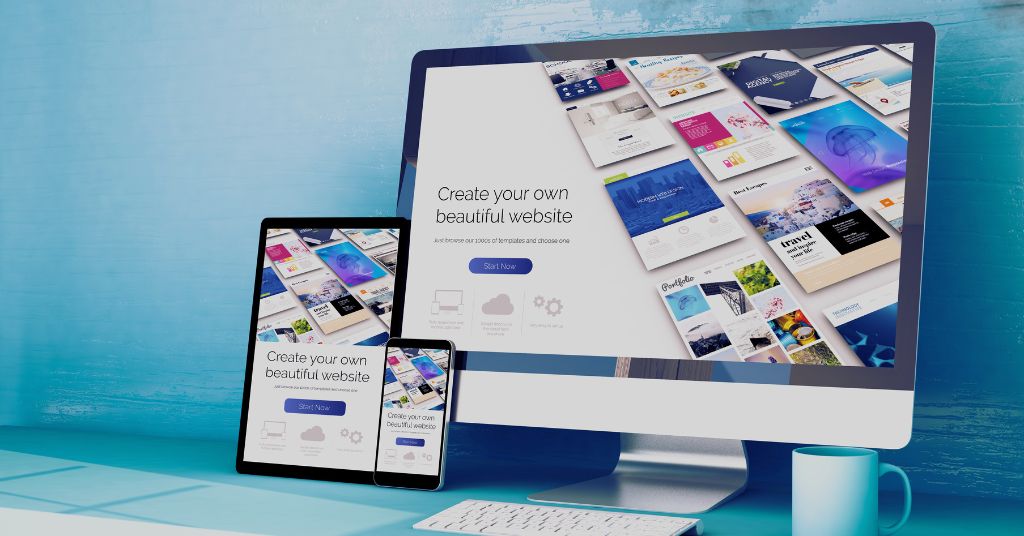You might underestimate the impact of professional ecommerce web design on your online success, but it’s often the difference between a fleeting visitor and a loyal customer. A well-crafted website not only captures attention but also guides users seamlessly through their shopping journey. From mobile responsiveness to intuitive navigation, every element plays a vital role in converting interest into sales. As you consider your own site, think about how these aspects can elevate your brand Professional eCommerce web design. What might you be overlooking that could significantly enhance your online presence?
Importance of First Impressions
When visitors land on your ecommerce site, their first impression can make or break their experience. You’ve only got a few seconds to grab their attention. This is where professional ecommerce web design comes into play. It’s not just about aesthetics; it’s about creating an environment that feels trustworthy and engaging.
If the design looks outdated or cluttered, potential customers may bounce before they even explore your products.
Professional ecommerce web design matters for online success because it reflects your brand’s credibility. A sleek, well-organized website conveys that you take your business seriously. It instills confidence in your visitors, making them more likely to trust you with their personal information and payment details.
Furthermore, a thoughtfully designed site helps to communicate your brand message effectively. You want your visitors to understand who you’re and what you offer within moments of landing on your page.
By investing in professional ecommerce web design, you’re not just enhancing your site’s appearance; you’re setting the stage for a positive user experience that can lead to increased conversions.
User Experience and Navigation
Creating a seamless user experience is crucial for keeping visitors engaged on your ecommerce site. When users land on your page, they should immediately feel comfortable navigating through your offerings. An intuitive layout helps them find what they’re looking for without feeling overwhelmed or lost.
Make sure your navigation is straightforward. Use clear categories and subcategories that reflect your products accurately. If users can quickly locate items, they’re more likely to complete a purchase. Implement a search bar that allows users to type in keywords, making it even easier for them to discover specific products.
Also, consider the visual hierarchy of your site. Important elements like calls to action should stand out, guiding users to take the next step—be it adding to the cart or checking out. Ensure that all links and buttons are functional and easy to click on, as broken links can frustrate visitors and lead to lost sales.
Lastly, keep your loading times in check. A slow site can deter potential customers, impacting their overall experience.
Mobile Responsiveness
Since a significant portion of online shopping occurs on mobile devices, ensuring your ecommerce site is mobile responsive is essential. A mobile-responsive design means your website adapts seamlessly to various screen sizes, providing a consistent experience regardless of the device your customers use. This isn’t just a nice-to-have; it directly impacts your sales.
When you prioritize mobile responsiveness, you’re making it easier for customers to browse your products, add items to their cart, and complete purchases without frustration. A well-optimized site loads quickly and displays correctly on smartphones and tablets, reducing bounce rates and improving user satisfaction.
If your site isn’t mobile-friendly, potential buyers may abandon their carts and turn to competitors who offer a better mobile experience.
Moreover, search engines like Google reward mobile-responsive sites with better rankings. That means more visibility and traffic for your business. You can’t afford to overlook this aspect of your ecommerce strategy.
Building Trust and Credibility
Trust and credibility are vital components of a successful ecommerce site. When customers browse your website, they’re looking for reassurance that their personal information and payment details are safe. A professional design can significantly enhance this perception. Use high-quality images, clear navigation, and consistent branding to create a polished look that reflects your business’s reliability.
Incorporating customer reviews and testimonials can also build trust. When potential buyers see positive feedback from others, they’re more likely to feel confident in making a purchase. Make sure these testimonials are visible and easy to find on your site.
Additionally, displaying security badges and payment options helps reassure customers that their transactions are secure. Make it clear that you’re committed to protecting their data.
Finally, don’t underestimate the power of a well-crafted “About Us” page. Sharing your story, values, and mission can help customers connect with your brand on a personal level. When they see the human side of your business, they’re more likely to trust you.
SEO Benefits
When it comes to ecommerce web design, optimizing for search engines can significantly boost your visibility and sales. A well-designed site that follows SEO best practices makes it easier for search engines to crawl and index your pages. This means your products are more likely to appear in search results, driving organic traffic to your store.
Using relevant keywords in your content, meta tags, and product descriptions also enhances your chances of ranking higher. When you create a user-friendly experience, like fast loading times and mobile responsiveness, it not only keeps visitors engaged but also signals to search engines that your site is worth ranking well.
Moreover, professional ecommerce web design can improve your site’s structure and navigation, which helps search engines understand your content better. This can lead to higher rankings in search results, making it easier for potential customers to find you.
Incorporating high-quality images and descriptive alt texts can further boost your SEO efforts. With these strategies, your ecommerce site can climb the ranks, attract more visitors, and ultimately increase your sales.
Conversion Rate Optimization
Your ecommerce site’s design plays a crucial role in conversion rate optimization (CRO). When you create a visually appealing and user-friendly experience, you make it easier for visitors to navigate your site and find what they’re looking for. This streamlined design directly impacts how likely they’re to make a purchase.
Start by ensuring that your layout is intuitive. Use clear headings and organized categories to guide users effortlessly through your offerings. Important elements like product images and descriptions should be prominently displayed, helping customers make informed decisions quickly.
Don’t underestimate the power of trust signals, like customer reviews and secure payment icons. These elements instill confidence in your visitors, increasing the chances they’ll complete their purchases.
Additionally, optimize your call-to-action buttons. Make them stand out with contrasting colors and persuasive text that encourages action.
Finally, ensure your site is mobile-responsive. A significant portion of online shopping happens on mobile devices, so a design that adapts to any screen size can boost your conversion rates significantly.
Integrating E-commerce Features
Integrating effective e-commerce features is essential for enhancing user experience and driving sales on your site. Start by incorporating a user-friendly shopping cart that allows customers to easily add and remove items. Make sure it’s visible on every page so they can access it anytime without hassle.
Next, implement secure payment options. Offering various payment methods, such as credit cards, PayPal, and digital wallets, ensures you cater to different customer preferences. Always prioritize security with SSL certificates to build trust.
Another key feature is a robust product search function. Customers should be able to filter products based on categories, price ranges, or attributes. This simplifies their shopping journey and leads to quicker purchases.
Don’t forget about customer reviews and ratings. Displaying genuine feedback encourages trust and can influence buying decisions. Additionally, consider integrating live chat support. This feature allows customers to ask questions in real-time, improving their overall experience.
Lastly, ensure that your site is mobile-responsive. As more shoppers use their smartphones, a seamless mobile experience can significantly boost your sales.
Brand Consistency
Establishing brand consistency is crucial for building trust and recognition among your customers. When your website reflects a cohesive brand identity—through colors, fonts, logos, and messaging—it creates a seamless experience that resonates with visitors. This consistency helps you stand out in a crowded marketplace, making it easier for customers to remember you.
You should aim for a unified look and feel across all your platforms, whether it’s your website, social media, or email newsletters. Consistent branding communicates professionalism and reliability, making customers more likely to engage with your products and services.
If they see the same style and tone repeatedly, it reinforces your brand’s identity and values. Additionally, brand consistency fosters loyalty. When customers know what to expect from you, they feel more confident making purchases.
They’ll return, not just for the products, but for the experience you provide.
Keeping up With Competition
In the fast-paced world of ecommerce, staying ahead of the competition is essential for success. You need to differentiate your brand, and a professional ecommerce web design can give you that edge. Your website is often the first interaction customers have with your brand, so it must make a strong impression. A visually appealing and user-friendly site keeps visitors engaged and encourages them to explore your offerings.
By investing in high-quality design, you not only enhance your brand’s credibility but also attract a wider audience. Competitors are always evolving, so you must keep your design fresh and relevant. This means regularly updating your site to reflect current trends and technologies. If your competitors are using sleek interfaces or cutting-edge features, you can’t afford to fall behind.
Furthermore, a well-optimized website improves your search engine rankings, making it easier for potential customers to find you. This visibility is crucial in a crowded market.
Ultimately, keeping your web design top-notch isn’t just about aesthetics; it’s about ensuring your brand stands out and thrives amidst fierce competition. Don’t let outdated designs hold you back—invest in your online presence today.
Long-term Cost Efficiency
Investing in a quality ecommerce web design isn’t just about making a good first impression; it can also lead to long-term cost efficiency. When you prioritize professional design, you’re setting up a site that not only attracts customers but also converts them effectively.
A well-structured website minimizes bounce rates and enhances user experience, which means you won’t have to spend as much on marketing to draw users back.
Additionally, a thoughtfully designed site reduces the need for frequent redesigns or fixes. You won’t be constantly pouring money into updates or troubleshooting issues that arise from poor design choices. Instead, you can allocate those funds toward expanding your business or enhancing your product offerings.
Moreover, a professional design often includes optimized loading times and responsive layouts, which can improve your search engine ranking. Higher visibility leads to increased traffic without the need for costly advertising campaigns.
In the long run, investing in quality ecommerce web design pays for itself by streamlining operations, enhancing customer satisfaction, and driving sales. It’s not just an expense; it’s an investment in your online success.
Conclusion
In today’s digital landscape, professional ecommerce web design isn’t just an option; it’s a necessity for your online success. By prioritizing first impressions, enhancing user experience, and ensuring mobile responsiveness, you’re setting the stage for higher engagement and conversion rates. Building trust and credibility through a well-designed site can differentiate you from competitors and foster customer loyalty. Invest in your ecommerce design now, and reap the long-term benefits of a strong online presence.


